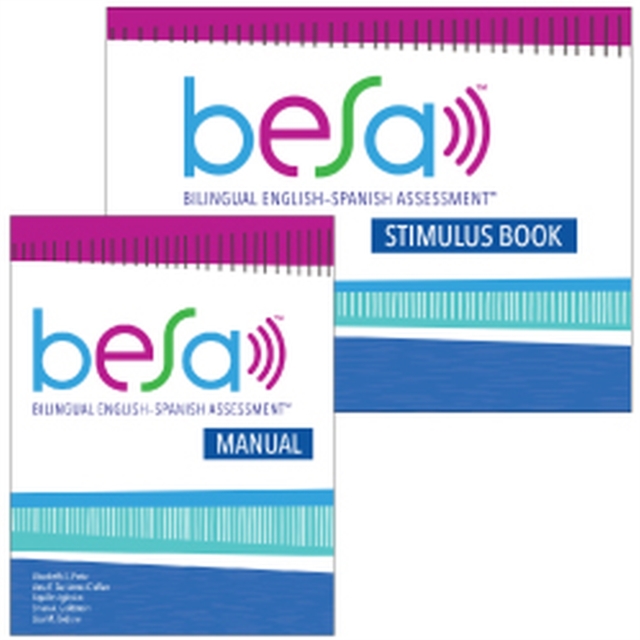
Bilingual English-Spanish Assessment™ (BESA™): Set Multiple-component retail product
by Elizabeth D. Pena, Vera F. Gutierrez-Clellen, Aquiles Iglesias, Brian A. Goldstein, Lisa Bedore
Multiple-component retail product
- Information
Description
When a young bilingual child experiences language difficulties, it can be hard to tell if those challenges are due to a disorder or just limited exposure to the English language.
That's a critical distinction—because while limited language exposure will fix itself over time, a language impairment is a clinical issue that will cause the child difficulties in school without timely and effective intervention. Now there's a valid reliable assessment that specifically responds to the needs of young Spanish-English bilingual children.
For use with children ages 4 through 6 years who have varying degrees of bilingualism, the Bilingual English-Spanish Assessment (BESA) was developed to:identify phonological and/or language impairment in bilingual children and English language learners using a standardized protocoldifferentiate between a delay in English language acquisition and a true language disorderdocument children's speech and language strengths and needsmonitor children's progress in both languages and use the information to make decisions about interventionThrough a combination of subtests for students and surveys for teachers and parents, BESA reveals the big picture of a young bilingual child's language development.
Comprehensive assessment with BESA includes:3 subtests (in both English and Spanish).
These three standardized, norm-referenced subtests address the key domains of morphosyntax, semantics, and phonology.
The subtests are administered with children one-on-one in a quiet, well-lit, well-ventilated room free of distractions. 2 questionnaires. The SLP gathers more information by interviewing both parents and teachers.
Bilingual Input-Output Survey (BIOS): determines Spanish and English use at home and school and pinpoints which language(s) need testingInventory to Assess Language Knowledge (ITALK): identifies the parent's and teacher's perception of the child's performance in each language and highlights areas of possible concernPragmatic activity: This 5- to 10-minute warmup activity, in which children are asked to “help wrap a present” with the examiner, is used to establish rapport with the child and give clinicians an idea of how collaborative and interactive the child will be during the rest of the assessment. BESA Benefits: Valid and reliable. There are very few assessment tools for bilingual children, and even fewer that are valid and reliable.
BESA answers the call for a bilingual assessment backed up with solid evidence of validity and reliability.
Culturally and linguistically appropriate. BESA subtests are different for each language; the Spanish subtest isn't just a translation of the English one.
Dialects were taken into consideration—the norming sample included 17 Spanish dialects and 7 regional dialects for English—and items were developed for each language based on the markers, structure, and culture of that language.
Uncovers the full picture of a child's language development.Not only does BESA identify language impairments, it also helps you gauge progress in both languages and document a child's dominant language across different domains of speech and language.
This critical information will help you plan interventions and educational programming for bilingual children.
Flexible and convenient. You can use each BESA component independently or combine them as part of an assessment battery.
Choose which component you want to give—you're not required to administer both the English and Spanish subtests.
BESA can also be given over multiple sessions, so you can easily fit it into your schedule.
What's in the kit?1 BESA Test Manual 1 BESA Stimulus Book 20 BESA Protocol English Forms 20 BESA Protocol Spanish Forms 20 BIOS Forms 20 ITALK forms
Information
-
Available to Order - This title is available to order, with delivery expected within 2 weeks
- Format:Multiple-component retail product
- Pages:277 pages
- Publisher:Brookes Publishing Co
- Publication Date:30/06/2018
- Category:
- ISBN:9781681252797
Information
-
Available to Order - This title is available to order, with delivery expected within 2 weeks
- Format:Multiple-component retail product
- Pages:277 pages
- Publisher:Brookes Publishing Co
- Publication Date:30/06/2018
- Category:
- ISBN:9781681252797